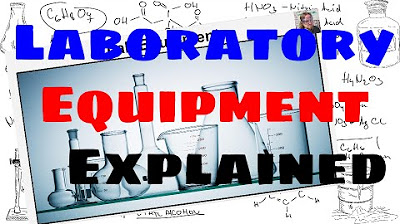Covalent Bonding
Summary
TLDRIn this chemistry essentials video, Mr. Andersen explores the concept of covalent bonding, distinguishing it from metallic and ionic bonding through the lens of electronegativity. He explains how electronegativity increases across and up the periodic table, influencing how atoms share electrons. The video covers nonpolar and polar covalent bonds, using examples like hydrogen gas and water, while illustrating bond length and energy through graphs. Key differences in properties between covalent and ionic compounds are highlighted, emphasizing their structural and conductive characteristics, culminating in a concise guide to determining bond types based on electronegativity differences.
Takeaways
- 😀 Covalent bonding involves the sharing of electrons between atoms.
- 🔍 Electronegativity measures an atom's ability to attract electrons, increasing across and up the periodic table.
- ⚖️ A nonpolar covalent bond occurs when two atoms share electrons equally, exemplified by diatomic oxygen (O2).
- 🔋 Polar covalent bonds arise when atoms with different electronegativities share electrons unequally, leading to a dipole with partial charges.
- 📊 Bond length and bond energy can be analyzed through graphs showing potential energy against atomic distance.
- 💧 Water (H2O) and hydrochloric acid (HCl) are examples of polar covalent compounds with partial charges.
- 🔗 The difference in electronegativity can determine bond type: less than 0.5 is nonpolar, 0.5 to 1.7 is polar, and over 1.7 is ionic.
- 🏗️ Ionic bonds typically occur between metals and nonmetals and involve the transfer of electrons, leading to the formation of crystalline solids.
- 🌡️ Covalent compounds usually have low melting and boiling points and poor conductivity, while ionic compounds have high melting and boiling points and are good conductors when dissolved in water.
- 📈 Understanding the periodic table's layout helps predict the type of bond formed between elements.
Q & A
What is electronegativity, and why is it important in covalent bonding?
-Electronegativity is the measure of how much an atom wants to attract electrons. It is important in covalent bonding because it helps determine how electrons are shared between atoms, influencing whether a bond is nonpolar, polar, or ionic.
How do electronegativity values change on the periodic table?
-Electronegativity values increase as you move up and to the right on the periodic table. This is due to the decrease in atomic size and the increase in positive charge in the nucleus.
What distinguishes a nonpolar covalent bond from a polar covalent bond?
-A nonpolar covalent bond occurs when two atoms share electrons equally, usually between atoms of the same element or between carbon and hydrogen. In contrast, a polar covalent bond occurs when there is a difference in electronegativity, leading to unequal sharing of electrons and the creation of a dipole.
What is the significance of bond length and bond energy in covalent bonds?
-Bond length is the optimal distance between two bonded atoms where the attractive and repulsive forces balance each other. Bond energy is the amount of energy required to break a bond. These concepts help in understanding the stability and strength of different bonds.
What method can be used to determine the type of bond based on electronegativity differences?
-You can determine the bond type using electronegativity differences: if the difference is less than 0.5, it is generally nonpolar; between 0.5 and 1.7 indicates a polar covalent bond; and greater than 1.7 typically signifies an ionic bond.
How does the sharing of electrons in covalent bonds differ between hydrogen and methane?
-In hydrogen gas (H₂), two hydrogen atoms share one electron each to form a bond. In methane (CH₄), carbon shares its four valence electrons with four hydrogen atoms, resulting in a stable, nonpolar covalent bond.
What are the properties of covalent compounds compared to ionic compounds?
-Covalent compounds typically exist as gases, liquids, or low-melting solids and are poor conductors of electricity. Ionic compounds, on the other hand, are usually crystalline solids with high melting and boiling points and conduct electricity well when dissolved in water.
Why does fluorine have the highest electronegativity on the periodic table?
-Fluorine has the highest electronegativity because it has a small atomic radius and a high positive charge in the nucleus, making it very effective at attracting electrons.
What is a dipole, and how is it formed in polar covalent bonds?
-A dipole is created in a polar covalent bond when there is an unequal sharing of electrons, resulting in one end of the molecule having a partial positive charge and the other end having a partial negative charge, due to differences in electronegativity.
How does the shell model explain the trend in electronegativity?
-The shell model explains that as atoms get smaller (moving up the periodic table), their outer electrons are closer to the nucleus, increasing the attraction between protons and electrons, thus raising electronegativity.
Outlines

Dieser Bereich ist nur für Premium-Benutzer verfügbar. Bitte führen Sie ein Upgrade durch, um auf diesen Abschnitt zuzugreifen.
Upgrade durchführenMindmap

Dieser Bereich ist nur für Premium-Benutzer verfügbar. Bitte führen Sie ein Upgrade durch, um auf diesen Abschnitt zuzugreifen.
Upgrade durchführenKeywords

Dieser Bereich ist nur für Premium-Benutzer verfügbar. Bitte führen Sie ein Upgrade durch, um auf diesen Abschnitt zuzugreifen.
Upgrade durchführenHighlights

Dieser Bereich ist nur für Premium-Benutzer verfügbar. Bitte führen Sie ein Upgrade durch, um auf diesen Abschnitt zuzugreifen.
Upgrade durchführenTranscripts

Dieser Bereich ist nur für Premium-Benutzer verfügbar. Bitte führen Sie ein Upgrade durch, um auf diesen Abschnitt zuzugreifen.
Upgrade durchführen5.0 / 5 (0 votes)






